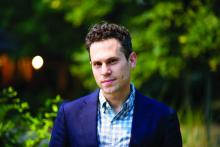Insulin rationing due to cost in the United States is common even among people with diabetes who have private health insurance, new data show.
The findings from the 2021 National Health Interview Survey (NHIS) suggest that about one in six people with insulin-treated diabetes in the United States practice insulin rationing – skipping doses, taking less insulin than needed, or delaying the purchase of insulin – because of the price.
Not surprisingly, those without insurance had the highest rationing rate, at nearly a third. However, those with private insurance also had higher rates, at nearly one in five, than those of the overall diabetes population. And those with public insurance – Medicare and Medicaid – had lower rates.
The finding regarding privately insured individuals was “somewhat surprising,” lead author Adam Gaffney, MD, told this news organization. But he noted that the finding likely reflects issues such as copays and deductibles, along with other barriers patients experience within the private health insurance system.
The authors pointed out that the $35 copay cap on insulin included in the Inflation Reduction Act of 2022 might improve insulin access for Medicare beneficiaries but a similar cap for privately insured people was removed from the bill. Moreover, copay caps don’t help people who are uninsured.
And, although some states have also passed insulin copay caps that apply to privately insured people, “even a monthly cost of $35 can be a lot of money for people with low incomes. That isn’t negligible. It’s important to keep that in mind,” said Dr. Gaffney, a pulmonary and critical care physician at Harvard Medical School, Boston, and Cambridge (Mass.) Health Alliance.
“Insulin rationing is frequently harmful and sometimes deadly. In the ICU, I have cared for patients who have life-threatening complications of diabetes because they couldn’t afford this life-saving drug. Universal access to insulin, without cost barriers, is urgently needed,” Dr. Gaffney said in a Public Citizen statement.
Senior author Steffie Woolhandler, MD, agrees. “Drug companies have ramped up prices on insulin year after year, even for products that remain completely unchanged,” she noted.
“Drug firms are making vast profits at the expense of the health, and even the lives, of patients,” noted Dr. Woolhandler, a distinguished professor at Hunter College, City University of New York, a lecturer in medicine at Harvard, and a research associate at Public Citizen.
Uninsured, privately insured, and younger people more likely to ration
Dr. Gaffney and colleagues’ findings were published online in Annals of Internal Medicine.
The study is the first to examine insulin rationing across the United States among people with all diabetes types treated with insulin using the nationally representative NHIS data.
The results are consistent with those of previous studies, which have found similar rates of insulin rationing at a single U.S. institution and internationally among just those with type 1 diabetes, Dr. Gaffney noted.
In 2021, questions about insulin rationing were added to the NHIS for the first time.
The sample included 982 insulin users with diabetes, representing about 1.4 million U.S. adults with type 1 diabetes, 5.8 million with type 2 diabetes, and 0.4 million with other/unknown types.
Overall, 16.5% of participants – 1.3 million nationwide – reported skipping or reducing insulin doses or delaying the purchase of it in the past year. Delaying purchase was the most common type of rationing, reported by 14.2%, while taking less than needed was the most common practice among those with type 1 diabetes (16.5%).
Age made a difference, with 11.2% of adults aged 65 or older versus 20.4% of younger people reporting rationing. And by income level, even among those at the top level examined – 400% or higher of the federal poverty line – 10.8% reported rationing.
“The high-income group is not necessarily rich. Many would be considered middle-income,” Dr. Gaffney pointed out.
By race, 23.2% of Black participants reported rationing compared with 16.0% of White and Hispanic individuals.
People without insurance had the highest rationing rate (29.2%), followed by those with private insurance (18.8%), other coverage (16.1%), Medicare (13.5%), and Medicaid (11.6%).


